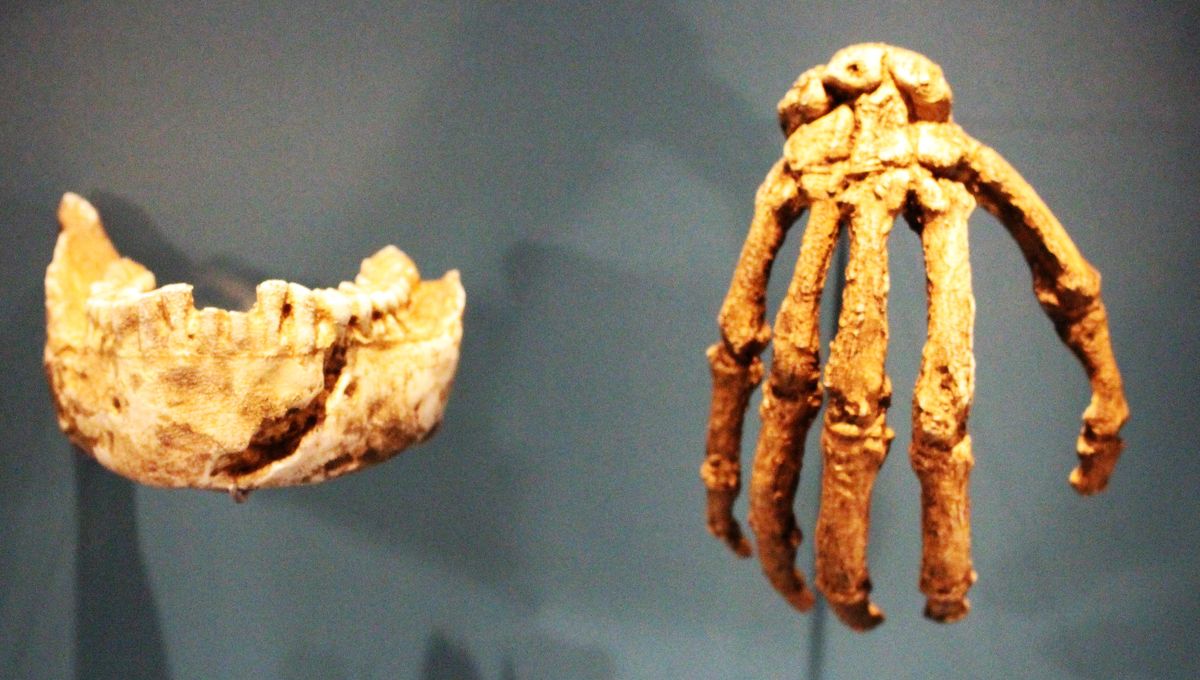
Homo naledi – the extinct human species of Netflix fame – had hands that were partially adapted to climbing and partly designed for crafting, new research has revealed. This finding helps to fill in a gap in our understanding of human hand evolution, suggesting that the manual hardware required for tool-making and other fiddly tasks started to develop before we lost our ape-like grip.
“A lot of people think that there was just this transition from where the hand was being used for locomotion and then suddenly we lost that and started using tools,” said study author Samar Syeda. “But it’s likely that it wasn’t such a linear transition. It was probably very up and down, and different hominins were likely doing both behaviors just at different frequencies,” she told IFLScience.
Up and down, in more ways than one. By comparing fossilized finger bones of Homo naledi to those of a 2-million-year-old hominin called Australopithecus sediba, the researchers found that both species possessed a mosaic of human and ape-like characteristics, revealing how our ancestors’ hands helped them both manipulate and locomote.
For instance, the thumb and fifth digit of A. sediba were well adapted to performing “power grips” that would have facilitated flint knapping and other dexterous activities, while other aspects of the hand morphology were more suited to locomotion. H. naledi, meanwhile, displayed a peculiar mixture of characteristics, whereby individual fingers contained some bones that appeared more human-like and others that were more ape-ish.
“That was really surprising,” says Syeda. “So we had to consider alternate behavioral scenarios that would result in that differing loading [of the various finger bones], and the closest we could think of is how modern humans rock climb.” More specifically, the study authors explain that H. naledi’s hands appear well adapted to performing “crimp grips”, which are often used by rock climbers.
Such a skill makes sense, given the layout of the Rising Star Cave in South Africa where H. naledi resided around 300,000 years ago. “It is a really deep cave and it has a massive drop down, so it is predicted that they were probably climbing because there’s really no other way to go in and out,” explains Syeda.
Despite this, the study authors are cautious not to make any definitive statements about how any ancient humans used their hands. “Whether crimp-like grips were used habitually by H. naledi and whether they were used to climb vertical rock surfaces, however, require further testing,” they write.
What these findings do suggest, though, is that there was a great deal of variation in hand morphology among prehistoric hominins, all of which goes to show that the transition from ape-like to human hands was not a straightforward process.
“We propose that this variation reflects multiple behavioral solutions to manipulative and locomotor hand use between approximately 2.0 and 0.3 [million years ago] rather than a linear trajectory toward increasing dexterity,” conclude the researchers.
The study is published in the journal Science Advances.
Source Link: Homo Naledi Had Hands That Rock Climbers Would Be Jealous Of